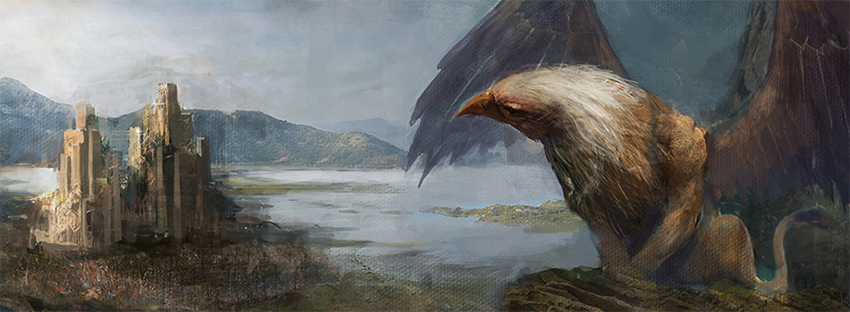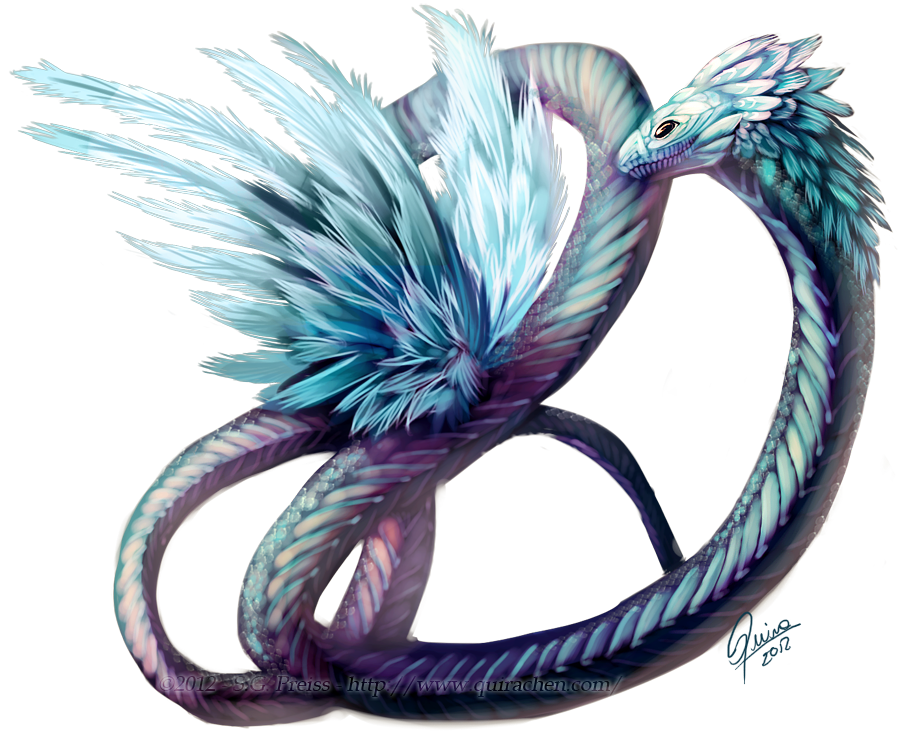Amphiptere
Labeled under dragon-kin, an amphiptere, also known as an amp, is a winged serpent and is the smallest classification of dragon. It's body is similar to that of the basilisk while also possessing a pair of wings that can come in three different varieties. Similar to wyverns and drakes, they are not found in the sea, only on land and mostly inhabit jungles, thick forest areas, or ruins.
Like all dragon-kin, amps follow the six prime dragon colors but they do not possess the breaths. Instead, they exhibit great knowledge and control of magic, a trait that their kin do not always share. They are extremely smart and even though they are not capable of speech, has shown to be able to easily understand basic commands and with further training and exposure, comprehension of the language they are around.
All amphipteres possess a serpent-like body and a pair of wings. Depending on the type, which there are three, depends on further anatomical structures.
Feathered Amphiptere
A feathered amphiptere, also popularly known as the hummingbird amp, is covered in feathers, possesses more of a beak than snout, the tip of its tail a plume of feathers, and it's wings just like that of a hummingbird in both appearance and motion. They are typically known for their prideful attitudes, making them exceptional choices for those in places of power.Fae Amphiptere
Fae amphipteres, also called butterfly amphiptere, are known for their bright and stunning colors. Their bodies are slick with no sign of scales or feathers, making them the easiest of prey. To make up for their lack of body armor, their wings paint pictures of intricate designs that they will flash at predators, causing them to be briefly stunned and even scared off. They are also masters at illusion magic and will use it to properly flee in times of fear. Their wings can come in sets of two or four and are translucent.Bat Amphiptere
Bat amphipteres are the most common and are usually the ones that people speak of when they refer to the species. They have bat-like wings, very much like their dragon and wyvern counterparts and unlike the other two, strictly follow the parent color rules that the other kin do. The tip of their tails are sharp and usually spiked.Basic Information
Genetics and Reproduction
Something that sets amps apart from their kin is their attitude towards reproduction. A single amp female can lay from four to eight eggs, the number a majority of the time being in the evens. It was later learned that this may be because the first young will feed off of their own egg yolk before attacking a sibling egg and eating them before resting for a time and then leaving the nest. There are times where it has been seen that a single baby amp will eat more than one egg but this is a rare occurrence.
Amps are not pack creatures and if seen around others then it is not their own species. They are highly territorial in relation to other amps but that is all, otherwise they are laxed and appear carefree in their environment. The only time amps come together is to reproduce, a process very much like that of snakes and basilisks. The amp is pregnant for 40 - 60 days and after laying the eggs, will abandon the nest.
Growth Rate & Stages
An amp can fly as soon as it hatches and once it gets the energy (believed to have something to do with eating their sibling eggs) will leave the nest and never return. If they are able to survive, then they will find themselves reaching adulthood in a matter of two weeks. They have the shortest lifespan of the dragonkin with only living between a century and a half or two.
Additional Information
Social Structure
Though known to be solitary creatures like wyverns, amphipteres do follow a social structure if living alongside another species. There is an almost mutualism symbiotic relationship with those they decide to be around. Take for an example a pack of wolves that decide to spare the amphiptere and work with it. The amp warns the wolves of predators as well as helps it find food. The wolves spare some of the amp it's food and provides protection. The same can be said if an amp bonds with a sentient species. It is not uncommon to see some with amps as companions. The individual feeds and gives shelter to the amp and the amp provides companionship and extensive help in whatever the individual needs.
Uses, Products & Exploitation
The wings of a fae amp and the feathers of a feathered one are believed to be both extremely lucky as well as be a conductor for magic. Due to this, many will magic wielders possess these items as charms. Sadly, this usually means that the amp was killed.
Genetic Ancestor(s)
Scientific Name
Reptilia Has D’aany
Lifespan
150 years
Trivia





Comments